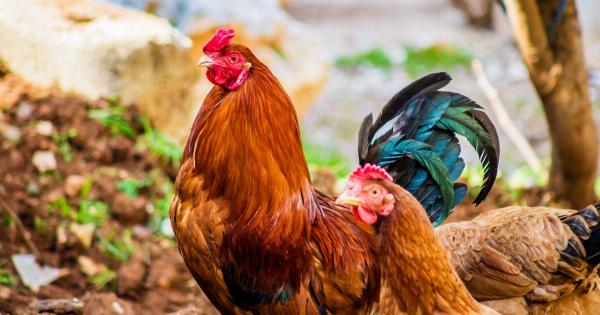Roosters can be beautiful and fascinating creatures that add joy to any backyard or farm. However, it’s important for parents to be able to identify roosters and understand what it means to have one in their flock.
This guide will provide parents with the necessary knowledge and tools to distinguish between roosters and hens, as well as tips for dealing with roosters in their poultry keeping endeavors.
1. Knowing the Characteristics
One of the easiest ways to identify a rooster is by its physical attributes.
Roosters are typically larger than hens, have longer and more prominent tail feathers, and boast magnificent combs and wattles that are often brighter and redder in color compared to those of hens.
Additionally, roosters tend to have spurs on the back of their legs, which are used for defense and fighting purposes. These spurs are absent in hens.
2. Behavioral Cues
Roosters are known for their distinct behavior. They are territorial in nature and often exhibit protective instincts towards their flock. Roosters frequently crow in the mornings to establish their dominance and communicate with other chickens.
This vocalization is a clear indicator of a rooster’s presence.
It’s worthy to note that while not all hens are completely silent, their sounds are generally quieter and different from the characteristic crow of a rooster.
3. Examination of Comb and Wattle Development
Another helpful method in identifying roosters is inspecting the development of their combs and wattles. These are fleshy growths found on top of the rooster’s head (comb) and underneath its chin (wattle).
In most breeds, roosters will develop larger and more vibrant combs and wattles compared to hens. This difference becomes more apparent as they mature.
Young chicks may exhibit similar growth, but as they reach sexual maturity, the differences become more evident.
4. Different Feathers and Coloration
The color and pattern of feathers can also be used to identify roosters. In some breeds, roosters may have more vibrant and iridescent feathers compared to hens. They may also display longer and more elaborate sickle feathers, especially in their tails.
However, it’s important to note that feather coloration alone is not always a foolproof method, particularly when dealing with certain breeds or genetic variations.
5. Consultation with Experts
If you’re still unsure about the sex of your chickens, don’t hesitate to seek advice from local poultry experts or even experienced chicken keepers in your community.
They are likely to have encountered similar situations and can provide valuable insights and assistance.
6. DNA Testing
If absolute certainty is required, DNA testing can be performed to determine the sex of a chicken. Although this method is accurate, it is typically more expensive and time-consuming.
As a result, it might be more practical for larger-scale operations or rare breed conservation projects rather than backyard flocks.
7. Preparing for Roosters
If you discover that you have a rooster in your flock, there are a few considerations to keep in mind. Firstly, ensure that local ordinances and regulations allow for roosters in your area. Some regions prohibit roosters due to noise concerns.
Secondly, be prepared for increased noise levels. Roosters are known for their crowing, especially during the early morning hours.
If this may cause disturbance or unrest within your household or neighborhood, it might be necessary to rehome the rooster or find alternative solutions such as soundproof housing.
8. Managing Aggression
Roosters can sometimes display aggressive behavior towards humans or other animals. This aggression can be managed through proper handling and socialization techniques.
It’s essential to establish yourself as the dominant figure and ensure that the rooster understands your authority. Additionally, providing plenty of space and resources can help alleviate aggression issues.
9. Providing Separate Living Arrangements
In situations where roosters pose a risk to the safety and well-being of the flock or humans, it may be necessary to provide separate living arrangements.
This could involve constructing a separate coop or pen where the roosters can be housed alone or with a small number of compatible individuals.
This separation will prevent any harm or unwanted breeding if you’re not planning on raising chicks.
10. Enjoying the Benefits
Despite the challenges and considerations associated with roosters, they also offer numerous benefits. Roosters are natural protectors and can keep the flock safe from predators.
They also play a vital role in reproduction when breeding and hatching new chicks.
Roosters can be beautifully majestic creatures that bring additional charm and diversity to your chicken-raising experience.
With the proper knowledge and understanding, parents can confidently identify and manage roosters in their poultry flock while appreciating their valuable contributions.































